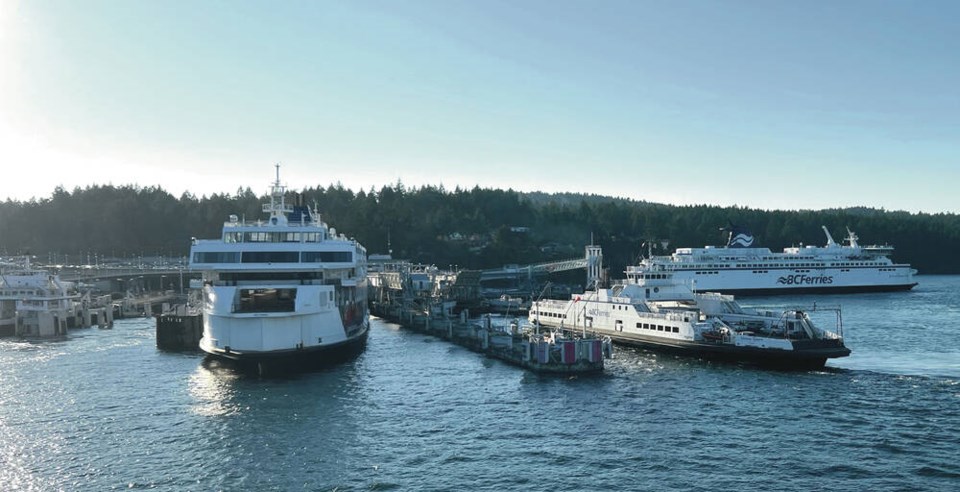If campaigning politicians ever get around to discussing B.C. Ferries, it’s not going to be pretty.
The ferry corporation has posted some encouraging news lately, coming out of the devastating impacts of the pandemic. It made significant progress on reducing the number of sailings cancelled due to crew shortages, which reached critical levels last year.
It is resurrecting the huge ship-building program that was sidelined during the pandemic. Its credit rating is steady or improving and it did a booming business last summer. It’s even allowing dogs on the upper decks, which pleases people as much as pups.
Much of the good news stems from one event: the half-billion dollar, one-time bailout the government granted the corporation last year. It arose from the unexpected multi-billion-dollar surplus Premier David Eby was presented with when he took office in late 2022.
It is being disbursed over time to keep fare hikes to a maximum of three per cent a year.
It followed an emergency $300-million grant in the midst of COVID in 2020. Both grants supplement an annual provincial contribution in the $200-million range.
But various financial reports suggest a major permanent hike in the taxpayers’ subsidy to the outfit will be needed to keep the system running at its current levels without major fare hikes.
Even with the cash infusion, B.C. Ferries is still operating in the red. It posted a $31-million loss in the most recent reporting period.
Elsewhere, “net earnings” isn’t the bottom line profit/loss number, but it is a key metric used to assess operating performance. It was positive up to 2022, and then slipped into the red slightly in 2023. In the most recent report, net earnings are minus $66 million — well over target — and the forecast is minus $89 million next year.
The crew shortage problem peaked in 2023 when 1,163 trips were cancelled on short notice because the company was “unable to find” enough crew members. That was up from 522 the previous year, 109 and 25 in preceding years.
It was addressed by a hiring blitz and by re-negotiating wages partway through the labour contract. The talks had to go to arbitration, where a 7.75 per cent raise was determined, and up to 10 per cent for some jobs. Management staff got a seven per cent hike.
The moves pushed annual, on-going labour costs up significantly. Salaries, wages and benefits hit $540 million this year, up $75 million in one year.
Labour costs were $380 million in 2021.
Another wage-reopener is underway and the overall collective agreement expires this month, so another rise is almost certain.
There’s a notable item in the reams of financial data. The annual breakdown of how each route performs financially was submitted this year to the independent B.C. Ferry Commissioner who regulates the outfit.
The four heavily used major routes, which include the three Vancouver Island-Lower Mainland runs and Horseshoe Bay-Langdale, have traditionally all turned a profit, which subsidizes the money-losing northern and minor routes up and down the coast.
This year the breakdown states that — before the various subsidies are applied — only Swartz Bay-Tsawwassen turned a profit. The two routes from Nanaimo to the mainland and the Langdale route are all in the red.
The financial concerns are lurking in the statements even though B.C. Ferries had an outstanding year. It carried more traffic than ever. It completed 91,000 round trips, 11,000 more than its contract with the government requires. It collected $720 million in fares, up five per cent from the previous year.
That sets expectations that have to be met every year from now on. It will take a significant influx of cash to do so.
The $500-million bonus payment eased complaints enough that B.C. Ferries isn’t an obvious election issue. But it is one of the highest profile public entities in B.C. and has been thoroughly politicized over the years by a series of governments.
Nobody is going to commit to huge fare hikes or service reductions, so a big permanent hike in subsidies in the next few years appears to be the only option, whether the politicians want to talk about it yet or not.
>>> To comment on this article, write a letter to the editor: [email protected]



